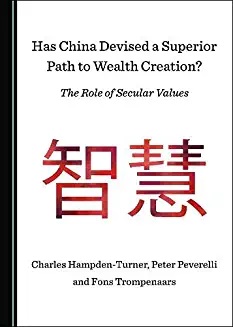September 9, 2019
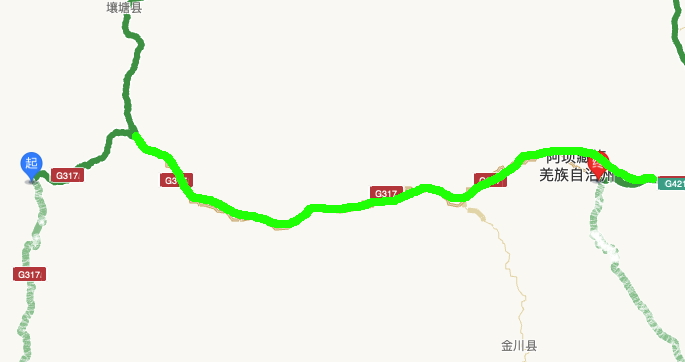
The route on this map is hand-drawn, as both Chinese online maps refuse to show the shorter route that we took that day. Distance covered: 268 km.
Goodbye Wengda
Our driver picked us up early in the morning. After loading our luggage as always, we first drove the the Chongqing restaurant for a simple breakfast, that we had arranged for when we had dinner there the day before. Our group was diminished to 6 members and 2 cars that morning. Our very last activity in Wengda was gassing up at a local gas station. Interestingly, I noticed and ad of the Two Sisters restaurant at the bottom of the pillar indicating the prices for the various types of gasoline. Clever girls!
What followed was a relatively monotonous drive through a valley as we had already got used to during the previous days. However, we could imagine that the car that had left the afternoon before would have had a hard time covering the same right in the dark.
Hotel on a mountain
It was almost noon, when we were approaching Barkam, better known to us by its Chinese name: Ma’erkang. Ma’erkang is a provincial town, but considerably larger than Wengda. It looked attractive to spend two nights there, so we could roam the streets in the evening, when the others would turn in early. However, our navigation system guided us passed the city area. I was getting a little anxious already, when I saw a group of buildings with restaurants, shops and inns appearing on our right. Together with a village, it was called Zhuokeji. We thought that our hotel would be part of that compound, but after making a few inquiries, we were directed to a road up the mountain on the left. We were once more glad to be in a four wheel drive car, when we meandered to the top of the mountain, where we saw the Zanglinka Mountain Hotel that would be our home for two nights. We were booked on the third floor once more, still without a lift. However, the rooms seemed OK again. The photo also gives a good look at our fleet of cars.

There were very few other people living there those days. So we had to order our lunch with the manager. Still, food is never a problem in China and we enjoyed a simple lunch. After lunch, my wife and I immediately went down the hill to check out the holiday compound, in particular looking for coffee.
The youth hostel
We met that target remarkably quickly. A few minutes after reaching the holiday area, we spotted a youth hostel, named Kalavinka, advertising for ‘hand brewed coffee’. The two men running the place were completely customerless, so they were happy to serve us with two Americanos. It took a while to make them, but the coffee was worth waiting for.

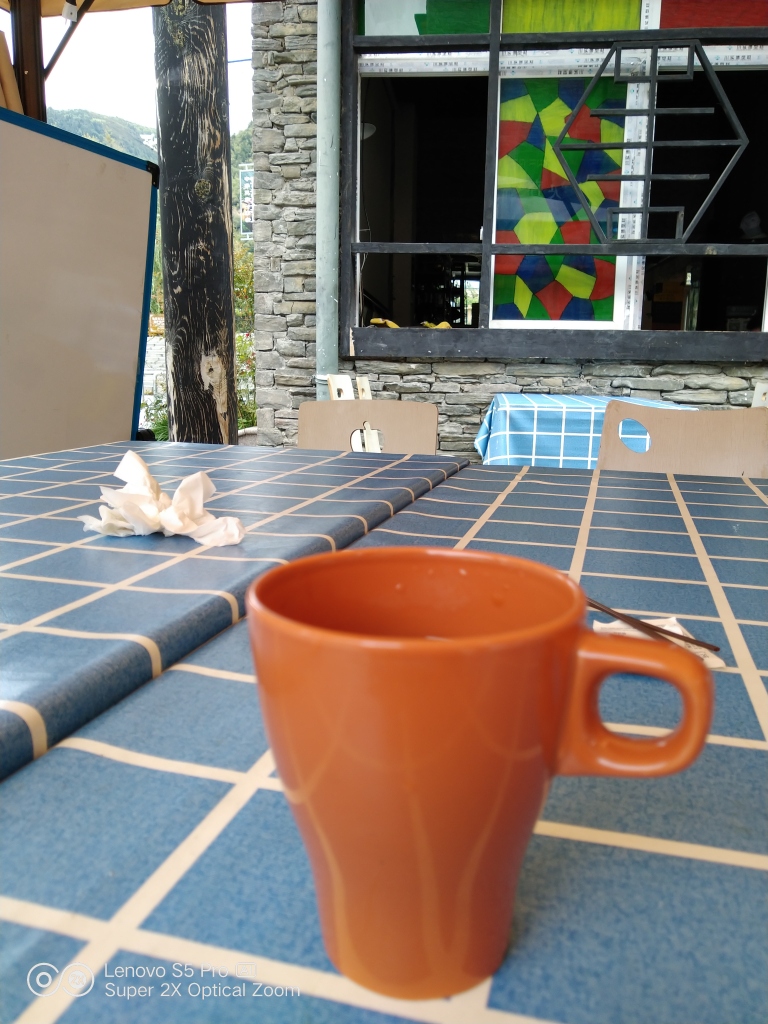
Long March
Zhuokeji was a station in the famous Long March, a military retreat undertaken by the Red Army of the Communist Party of China (October 1934 – October 1935), to evade the pursuit of the Kuomintang (KMT or Chinese Nationalist Party) army. A small Long March museum was part of the compound and a plaque commemorating the event was carved in the mountain. While we were drinking coffee, we could see our fellow travelers walking towards the museum. We met them when they were already exiting the building; the museum was very small.
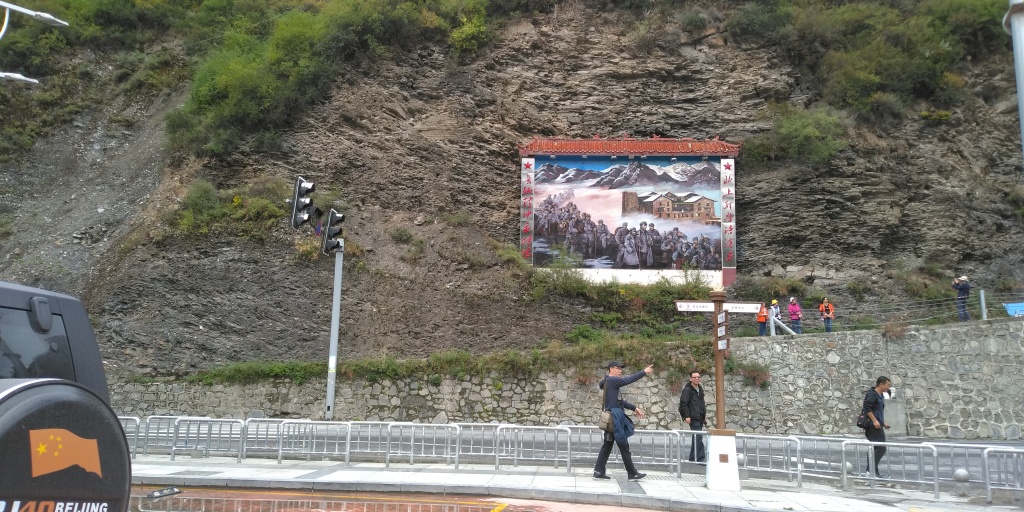

Zhuokeji Tusi Official Manor

After having taken the obligatory hundreds of photos around the bridge that separates the holiday compound from the old village, we went up a hill to visit the manor of the former village chief, better known as the Tusi. We actually spent a couple of hours there. I is a big place and remarkably well preserved. Mao Zedong and Zhou Enlai had stayed there for a week and after the promulgation of the PRC, the last Tusi had become a local people’s representative. We want to visit the village as well. The local people were not Tibetans, but of the Qiang nationality. However, it was getting late and it started to drizzle, so we opted to go back to the holiday village, perhaps finding a proper place for dinner.
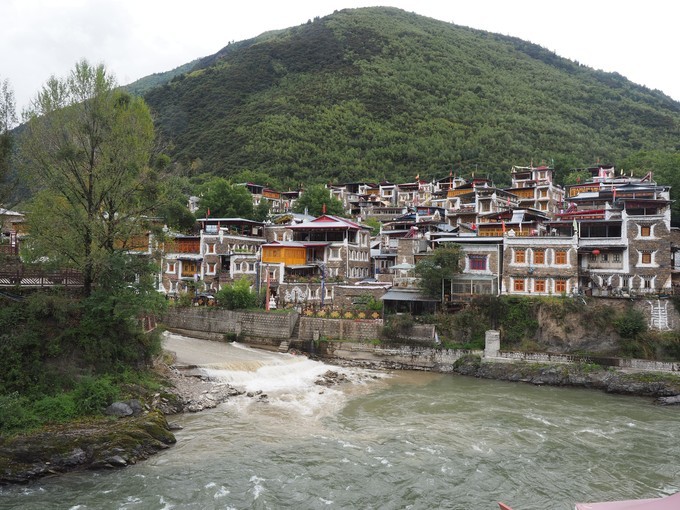
We actually did find such a dinner in the same youth hostel where my wife and I had drunk coffee earlier that afternoon. We had dinner outside, under an umbrella. It was less cold at night, because Ma’erkang (2200 metres) was at a lower elevation than, e.g., Wengda (3300 metres). Dinner was actually good and we chatted a bit with the proprietors, who told us that they were fully booked for the upcoming National Day (October 1) week.
As we had to walk uphill back to the hotel, we saw no need for another nightly stroll and called it a day much earlier that we were used to.
Table of Contents
